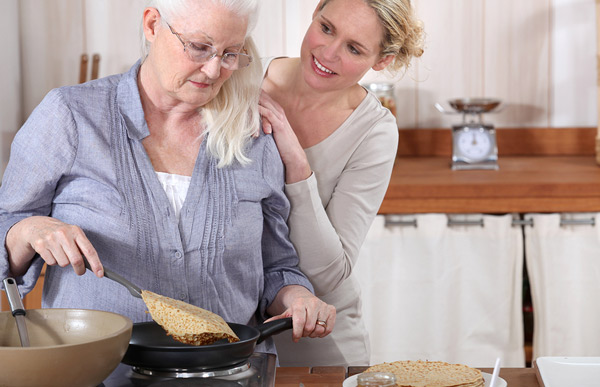 Nursing home residents with dementia are less likely to be apathetic if they live in an appropriately stimulating environment, according to nursing researchers. Nearly half of all residents in nursing homes have dementia, according to a 2013 report by the Centers for Disease Control. Apathy is one of the most common neurobehavioral symptoms in dementia, with about 90 percent of older adults with dementia experiencing it. Those with mild dementia will decline more quickly into severe dementia if they also suffer from apathy, making it important to help them stay engaged.
Nursing home residents with dementia are less likely to be apathetic if they live in an appropriately stimulating environment, according to nursing researchers. Nearly half of all residents in nursing homes have dementia, according to a 2013 report by the Centers for Disease Control. Apathy is one of the most common neurobehavioral symptoms in dementia, with about 90 percent of older adults with dementia experiencing it. Those with mild dementia will decline more quickly into severe dementia if they also suffer from apathy, making it important to help them stay engaged.
‘Persons with dementia who are also apathetic won’t be curious about the world around them; they are not motivated to carry out activity nor engage with those around them, in either a positive or a negative way,’ said Ying-Ling Jao, assistant professor of nursing, Penn State. ‘Apathy has several negative consequences for both the persons with dementia and their caregivers. The individuals’ cognitive function will likely decline faster and their caregivers will have more difficulty with their caregiving and are more likely to become depressed.’
Jao observed 40 nursing home residents with dementia by watching video recordings of each taken throughout a typical day. She chose three videos per resident from recordings made during a previous study — one taken at a mealtime, one during a direct interaction between the resident and staff and one that was randomly selected.
‘The purpose of this study was to examine the relationship between environmental characteristics and apathy in long-term care residents with dementia,’ said Jao, who reports her results in the current issue of The Gerontologist. ‘My interest in apathy was mainly driven by my clinical observations in nursing homes when I was a nurse practitioner student. I remember that no matter which nursing home I visited, I often saw a crowd of residents sitting in the living room or hallway with no interest in the surroundings and no emotional expression.’
Jao looked at five characteristics in particular: environmental stimulation, ambiance, crowding, staff familiarity and light and sounds. Of the five, clear and strong environmental stimulation was the most significantly associated with a lower apathy level in the residents.
‘Interestingly, our results showed that clear and strong environmental stimulation is related to lower apathy, while no stimulation or an overwhelming environment with no single clear stimulation is related to higher apathy,’ the researchers said.
Clear stimulus is found in an environment without competing background noise, and with a single straightforward stimulus. A good example of this is a therapist leading a music therapy program for residents in an otherwise quiet room.
The strength of the stimulus depends on how intense, persistent, interesting and out of the ordinary it is. Routine activities, such as a regular conversation or meal, are considered moderate stimulation, while a birthday party is considered strong simulation.
‘One of the innovative features of this study is that we used the Person-Environment Apathy Rating scale to measure environmental stimulation at an individual level,’ said Jao. ‘I believe that the same stimulation may be perceived differently or bring about different responses for different individuals in the same environment based on the individual’s characteristics, interests and relevance to the stimulation. In fact, a stimulus may be clear to one person but unclear to another because of differences in hearing or visual abilities, especially in older adults.’
Jao plans to continue this research by replicating the study with a larger sample size and by looking more closely at the quality of interaction and communication between nursing home residents and their caregivers.
‘One of the most important implications of these findings is that they will guide us in designing appropriate physical and social environments for dementia care that helps prevent or decrease apathy,’ she said. ‘We need more people to care about apathy for older adults with dementia.’ The study done by Penn State.